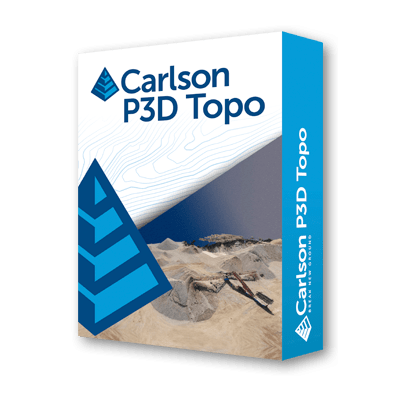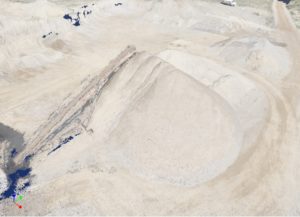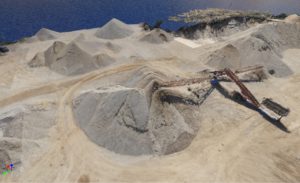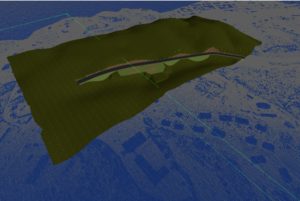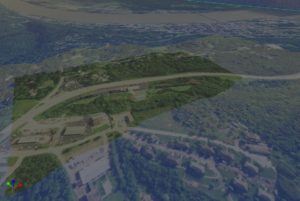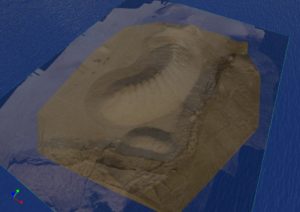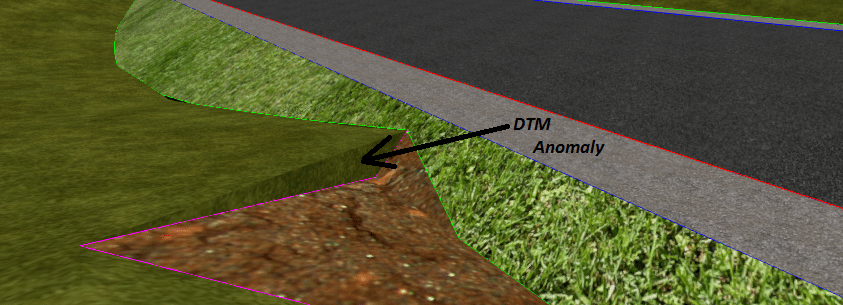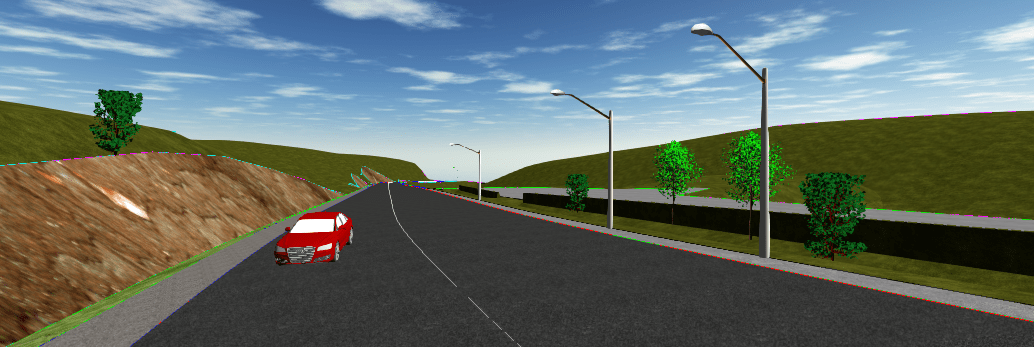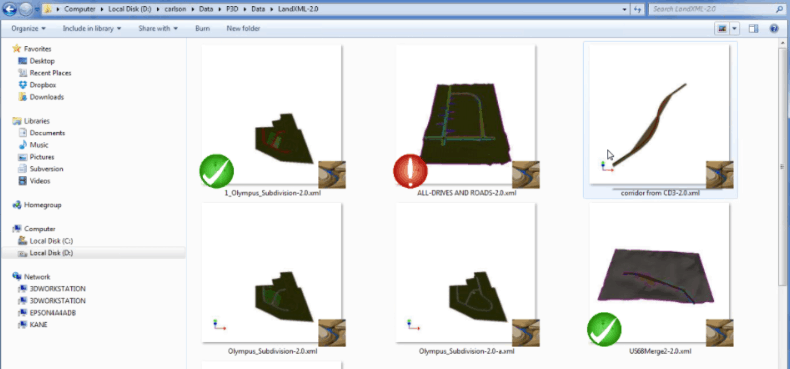P3D Topo
$1,750.00
Bridge the gap between drones and CAD
Designed for use by surveyors, civil engineers, and contractors, Precision 3D Topo allows users to import survey data, points, polylines, surfaces, point clouds, both traditional LIDAR and aerial drone survey data, and more from a wide variety of programs and entities to create usable 3D surfaces.
• Importing Point Cloud data from Lidar and Aerial Drone mapping.
• Merge and edit point clouds to create surface models.
• Import survey data to further refine surface models.
• Powerful surface Editing tools to perfect surface models. Including Google Maps photographic background, automated Google surface creation.
• Easy surface volume tools directly from point clouds or surfaces.
• Advanced Texturing and Presentation Tools
• Import / Export all data as LandXML, DXF, and Surface Models as TIN, TN3, and TTM.
See Available Discounts in Cart
Features
Carlson Precision 3D Topo 2017 Feature List
- Windows 3D thumbnail image shell extension for LandXML, TIN, GRD, P3D files.
- Supports georeferenced data import/export
- Undo/Redo support
- Supports mixed Metric/Imperial units
- User customizable Window layout
- Drag and Drop file support
Import:
- Import georeferenced images: GeoTiff, Jpeg2000, jpeg and MrSid.
- Drape image to surface.
- Import point clouds from .las, .laz, .ply, .xyz, .pts, .e57, .pcd files
- Uses multiple CPU cores for faster performance.
- Load multiple files at once with preview.
- Apply point thinning filter during load of very large files.
- Apply Bareground classification and Outlier filter for .las, laz files.
- Supports color returns.
- Simple TIN surface creation
- Import survey point data from. LandXML and Carlson CRD files.
- Import surfaces from LandXML, DEM, DXF and Carlson TIN.
- No reduction for highest TIN resolution
- Grid Reduction for faster loading of large surfaces
- Slight simplification
- Aggressive Simplification
- Import polylines from LandXML, Shapefile, Carlson CLN and PLN files.
- Survey Field to Finish CRD files with points, polylines, 3D objects and textures for closed polylines.
- Drag and Drop file support.
Fast Point Cloud Editing:
- Undo/Redo support
- Uses multiple CPU cores for faster performance.
- Merge multiple point clouds together.
- Crop point cloud to smaller area.
- Delete point cloud points.
- Crop/delete points using polygons.
- Remove trees, vegetation, cars, building using baregound filter.
- Apply bareground filter within polygon boundaries.
- Reduce points using voxel grid, outlier and shadow points filters.
Surface Creation:
- Create surfaces from point cloud data.
- No reduction for highest resolution
- Grid Reduction for faster loading of large surfaces
- Slight simplification
- Aggressive Simplification
- Create surfaces from imported points and polylines.
- Add points and polylines to existing surfaces.
- Merge surfaces
- Crop surfaces
Surface Editing:
- Real-time surface editing with dynamic contours, faces and slope arrows
- Add/remove points
- Add breaklines
- Swap triangle edges
- Remove triangles
- Edit point elevation
- Set point elevation from slope
- Surface smoothing
- Improve ridges and valleys
- Remove dimples (small shallow spots)
- Create PAD template surfaces for cut and fill
- Simple texturing using polylines
- Crop surfaces to polyline
- Merge Surfaces
Create:
- Surfaces (basic, or from points and polylines)
- Points
- Polylines (draped to surface, 3D or 2D modes)
- Dynamic cursor snaps to vertex, insert point, near to, TIN face vertices, TIN Face edges, and Center of TIN faces.
- Dynamic angle and offset snaps.
Visualization:
- Profile and Section view for polylines.
- Automated 3D textures of colorized Carlson TIN and LandXML-2.0 surfaces.
- Auto texture / colorization tools for imported monochromatic surfaces.
- Insert 3D models from .OBJ and .SKP files.
- Overlay image data with surfaces.
Export:
- Exports to LandXML-2.0, Carlson TIN, ESRI Geodatabase, Trimble .TTN, Topcon .TN3
- Print to PDF
- Export to 3D Printer as .stl file
- Print Preview and Print support
Carlson Precision 3D Topo 2017 LandXML Edition Feature List:
Functionality
- Open LandXML Files
- Windows 3D thumbnail shell extension for LandXML, TIN, GRD, P3D files.
- Drag and Drop file support
- Draw/Edit Polylines
- Texture surface using closed polylines
- Auto Texture Surface for quick area detection and texturing
- Insert 3D objects (OBJ and SKP files)
- Measure command
- Save LandXML files as 2.0
LandXML Imported Data Supported (LandXML-0.88, LandXML-1.0, LandXML-1.1, LandXML-1.2):
- CgPoints
- Survey Monuments
- Survey Reduced Observations
- Surfaces (TIN and from SourceData Chains, Breaklines)
- Watersheds
- Alignments (CoordGeom Element Supports: Line, Curve, Spirals, IrregularLines and Chains)
- Parcels
- PipeNetworks
- PlanFeatures
LandXML Imported/Exported Data (LandXML-2.0 Specific):
- All texture and 3D object data fully contained in a single LandXML-2.0 file
- Surfaces with multiple colors and textures
- Material Table
- TextureImages
- 3D Objects
DTM Editing
P3D Topo’s editing ability of digital terrain models (DTMs) offers many benefits:
- Load and review the two most common formats for surfaces: LandXML and DXF files of 3D Faces, in addition to TIN and Grd files from Carlson Software.
- Overlay other LandXML file types such as points, alignments, parcels, storm and sanitary sewers, culvert pipes and other piping systems.
- View the 3D Surface with user-controlled textures to quickly spot errors in the DTM.
Fix the errors in the DTM for re-saving and use in CAD programs, or for direct output for machine control and survey stakeout.
Never before has there been such an array of tools to locate and correct DTM errors, all in a sharp 3D interface. Surveyors, contractors and engineers alike can use the software to make sure the final DTM surface is of the highest quality. Editing tools include surface blending, spike and dimple removal, DTM vertex editing and surface pad placement by defined polygon and outslope conditions. Multiple undoes and redoes allow you to study your changes and makes things perfect.
Use the automated color and texture contrasts of P3D Topo to find DTM Anomalies and then remove them with routines such as blend.
Inspection tools include slope analysis at any point, referencing any selected or drawn alignment. The slope analysis below shows a grade of 4.000% at the selected point but also a profile slope of 6.170% along the alignment and a maximum slope of 7.353%. Any edited or existing slope can be carefully examined for accuracy in terms of fulfilling the intention of the design.
In addition, P3D Topo will allow placement of symbols from a user-expandable symbol library, and will even conduct automated field-to-finish, in 3D, from points and descriptions, leading to realistic site renderings.
Study all your DTM surfaces by taking advantage of the thumbnail viewer. Look through your files and quickly track to the target file. Load it, study it, and perfect it.
Modified surface data can be exported to LandXML-2.0, Carlson TIN, Trimble TTM, Topcon TN3 and 3D printer as STL. Yes, you can even use 3D printing to make models of your final designs, ready to show to planning commissions and to impress the project funding team. P3D Topo is the ultimate 3D visualization and editing tool all wrapped up in one solution. If DTM errors have been found and fixed, if slopes have been studied and validated, and finally, if it looks good, then it IS good. It’s ready to build, ready to show or ready to use for final design work. If you are in the DTM business, you need Precision 3D Topo.
Remarkably Easy-To-Use 3D Engineering Design Software
- P3D is multithreaded and performance will increase with core count.
- P3D is 64bit and will use all available RAM available to support large models.
- P3D uses advanced 3D shaders and performance will increase with graphics cards that process these faster.
Videos
System Requirements
For Carlson’s CAD-Based Products
Note: Carlson products installed on top of the CAD products of IntelliCAD or AutoCAD, are subject to the same requirements as the CAD engine itself. Please follow the requirements for the CAD platform listed below and allow an additional 750 MB of hard-drive space for the Carlson application.
Carlson 2016-2018 with IntelliCAD 8.x
- Compatible with 32 or 64 bit Windows Vista, 7, 8, 8.1, and 10
- For hardware requirements, see Carlson 2013-2015* below
Carlson 2013-2015* with IntelliCAD 7.2
*Starting with 2013 build 130120
Intel® Pentium® 4 or comparable (minimum), Intel i7 or at least Intel i5 or comparable (recommended). Due to the variety of processors on the market, one can use cpubenchmark.net/cpu_list.
- 32-bit Windows 7-8.1: 1 gigabyte (GB) of RAM minimum for, 4 GB recommended.
- 64-bit Windows 7-8.1: 2 GB of RAM minimum for, 8+ GB recommended.
- Windows Vista: 1 GB of RAM minimum, 4 GB recommended.
- Windows XP: 512 megabytes (MB) of RAM minimum, 2 GB recommended.
Graphics card compatible with OpenGL Version 1.4 or higher:
- Recommended are desktop graphics level discrete (not integrated cards like Intel HD) graphics cards.
- Preferably Nvidia Geforce due to their more consistent driver support.
- Discrete ATI/AMD cards will be adequate, but ATI’s driver support has been spotty and user is frequently deferred to the computer manufacturer for support.
- Professional Nvidia Quadro cards are not currently recommended due to driver issues.
- Powerful gaming cards are not required and probably would not provide as much benefit as investment in more memory or better CPU
Carlson 2012 and earlier with IntelliCAD 7.1 and 6.x based products
- Windows® XP, Windows® Vista, Windows® 7
- Intel Pentium® or more powerful processor
- 64-bit machines are supported, but application itself is 32-bit
- 1 GB RAM (minimum), 4 GB recommended (for complex drawings)
- 400 MB of free hard disk space (1.2 GB Total, see Note above)
AutoCAD®
Please visit the AutoCAD System Requirements page for current specifications which are subject to change without advance notice.
Please visit the Autodesk summary of the Operating system compatibility for AutoCAD (Autodesk Bulletin TS14078105) for historical references between AutoCAD and its supported operating system(s).
Please see Note above for hard disk space requirements for the Carlson application.
Embedded AutoCAD® OEM Engine
Carlson solutions based on AutoCAD 2018 Embedded
Takeoff R10 / Survey OEM 2018
Please note the CPU compatibility below: older AMD CPUs like Athlon XP+ do not support SSE2 technology and can not run Embedded AutoCAD 2018 products.
- Microsoft Windows 10 (64-bit only); Microsoft Windows 8.1 with Update KB2919355 (32-bit & 64-bit); Microsoft® Windows® 7 SP1 (32-bit & 64-bit)
- 4 GB RAM (minimum), 8 GB (recommended)
- 2 GB free disk space for installation
- 1360 x 768 (1920 x 1080 recommended) with True Color
- Windows Internet Explorer® 11 or later
- Install from download or DVD
Carlson solutions based on AutoCAD 2013 Embedded
Takeoff R6, R7, R8, R9 / Survey OEM 2013, 2014, 2015, 2016, 2017
Please note the CPU compatibility below: older AMD CPUs like Athlon XP+ do not support SSE2 technology and can not run Embedded AutoCAD 2013 products.
- Windows® 8 and 10 Standard, Enterprise, or Professional edition (8 requires installation of AutoCAD LT 2013 Service Pack 2); Microsoft® Windows® 7 Enterprise, Ultimate, Professional, or Home Premium edition (SP3 or later) with an Intel® Pentium® 4 or AMD Athlon™ dual-core processor, 3.0 GHz or higher with SSE2 technology.
- 1 GB RAM (minimum), 8 GB (recommended)
- 1.4 GB free disk space for installation
- 1,024 x 768 VGA display with true color
- Internet Explorer 7.0 or later
- Install from download or DVD
Carlson solutions based on AutoCAD 2010 Embedded
Takeoff R4, R5 / Survey OEM 2010, 2011, 2012
Please note the CPU compatibility below: older AMD CPUs like Athlon XP+ do not support SSE2 technology and can not run Embedded AutoCAD 2010 products.
- Microsoft Windows 7, or,
- Windows Vista, SP1 or later (Enterprise, Business, Ultimate, Home Premium) operating system, with,
- Intel Pentium 4 processor or AMD Athlon dual-core processor, 3.0 GHz or greater with SSE2 technology
- 1 GB RAM (minimum), 8 GB (recommended)
- 850 MB free disk space for installation
- 1024 x 768 VGA display with true color
- Microsoft Internet Explorer 7.0 web browser or later
- DVD drive
Or
- Microsoft Windows XP Professional or Home Edition operating system (SP2 or later), with,
- Intel Pentium 4 or AMD Athlon dual-core processor, 1.6 GHz or greater with SSE2 technology
- 512 MB RAM
- 850 MB free disk space for installation
- 1024 x 768 VGA display with true color
- Microsoft Internet Explorer 7.0 web browser or later
- DVD drive
Carlson solutions based on AutoCAD 2007 Embedded
Takeoff R2, R3 / Survey OEM 2007, 2008, 2009
- Microsoft Windows 7, or,
- Windows Vista, or,
- Windows XP Home or Professional SP1 or better, or,
- Windows XP for Tablet PC SP2, or,
- Windows 2000 SP3 or better
- Pentium III 800 minimum, Intel Pentium IV recommended
- 512 MB RAM
- 550 MB free disk space for installation
- 1024 x 768 with True Color
- Microsoft Internet Explorer 6.0 SP1 or higher
- CD-ROM drive
- Mouse, trackball, or compatible pointing device
Carlson solutions based on AutoCAD 2004 Embedded
Takeoff R1 / Survey OEM 2004, 2005, 2006
- Microsoft Windows XP (Professional, Home Edition, or Tablet PC Edition), or,
- Windows 2000, or Windows NT 4.0 (SP6a or later)
- Pentium III 800 minimum, Intel Pentium IV recommended
- 256 MB RAM
- 300 MB free disk space for installation
- 1024 x 768 VGA with true color (minimum)
- Microsoft Internet Explorer 6.0
- Mouse, trackball, or compatible pointing device
- CD-ROM drive
Free Support
Carlson Software Works For You
A customer’s relationship with Carlson Software goes beyond simply purchasing our software – with Regional Managers throughout the country, free technical support for life, and training options for any budget – we’ve got you covered!
Direct Technical Support
- Hours: Monday – Friday, 8:00 AM – 6:00 PM (EST)
- E-mail: moc.wsnoslrac@troppus
- Problems/Suggestions: Send in a report
- Telephone: 606-564-5028
- Fax: 606-564-6422

